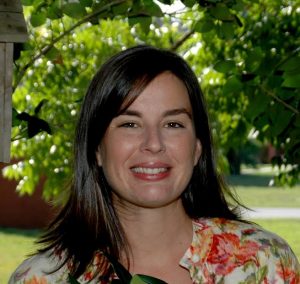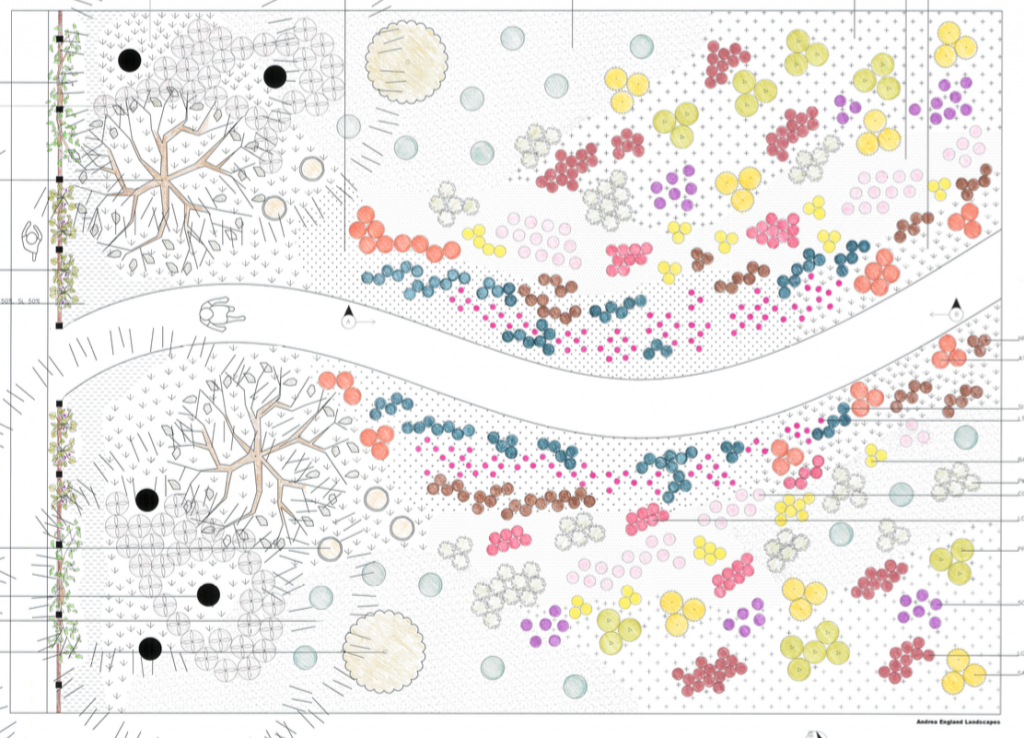Florida native plants for sustainable landscapes.
Visit PlantRealFlorida.org

Andrea England 2017 Central Florida Landscape Award Winner
FANN Real Florida Landscapes Design Competition 2017
Andrea’s Meadow Trail, an upland hiking trail, is a naturalistic planted area supporting a variety of pollinators with a diverse combination of native grasses and wildflowers. Andrea was inspired to restore a type of ecosystem that is quickly disappearing as Florida is rapidly developed. The trail begins under a light canopy of Longleaf Pines and opens up into full sun. Successful maintenance of this plan would require starting with a clear and weed free site, going through two grow/kill cycles to clear the seed bank of undesirable weed seeds. Tolerance for plants reseeding and “moving” in the landscape will also be needed (the ever changing, not static, living landscape). The meadow can be cut down to just under a foot or so once a year in late winter to manage the appearance (or ideally burned!), and paths cut in for hand weeding accessibility. Click to review the design and see Andrea’s personal statement below.

As I re-enter the landscaping field, I see my niche in designing naturalistic, meadow-like spaces. I took a break from the design world during the recession. I took time off to start my family but I also got to delve into the new trend in creating meadow style landscapes. In 2010, I read Urban & Suburban Meadows by Catherine Zimmerman. That book changed the way I viewed the potential for my own landscape. I was so inspired that in 2011, I started my own backyard meadow using Florida native plants and have been experimenting and learning how to successfully combine grasses and wildflowers to get the right balance for function and aesthetics. I am so inspired with the direction landscape design is turning, toward wilder, more natural looking spaces with regionally appropriate flora that support wildlife, near and dear to my heart. A flurry of books have come out lately and now I am obsessed with the work of Thomas Rainer and Claudia West on the value of creating plant communities, examining the way plants work together to create functioning groups that look good, support wildlife and also attempt to outcompete plants that are not wanted.
What interested me the most about this project were the design goals for diversity of plant material and support for wildlife. I appreciated not being limited to choosing just a few plants, I was able to use lots of grasses and wildflowers. My plant list originally had about a dozen more wildflowers but I cut them because I wanted to be able to repeat the others enough so that patterns of color and structure would be easier to read. I found the most challenging aspect to be finding drawing files for elevations of American praire/meadow plants. I draw on the computer and it was hard to find elevation symbols for these plants. I actually drew the Carphephorus corymbosus and Liatris symbols myself because I couldn’t find anything that resembled those.
I see the future of landscape design being a continuation of the current trend toward more naturalistic feeling landscapes, designed with native plants. I hope that it is not just a trend, and that it catches on and really sticks. I think it will because I believe if people really look at their own landscapes through a lense of “what is sustainable” in the long run, what can they commit to long term, it’s not St. Augustine sod. It’s reducing the amount of lawn, expanding planting beds and filling them with natives that form self-sustaining plant communities that are then managed thoughtfully. There is so much good information out there on native plants, how to design with them, how to manage them, even availability has grown a lot in just the past few years. Americans still buy most of their plants from the big box stores and those plants are from China and South America mostly. But I am hopeful that attitudes are shifting toward sustainability and people are waking up to the beauty and value of our native plants.